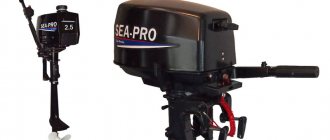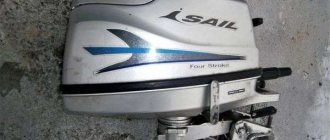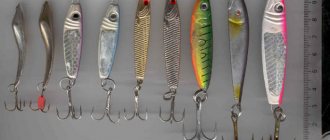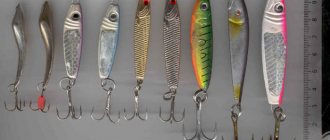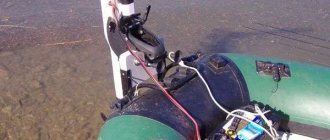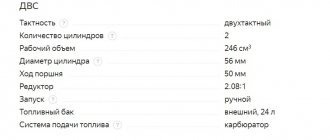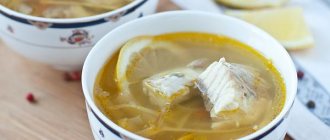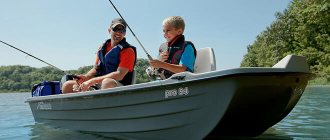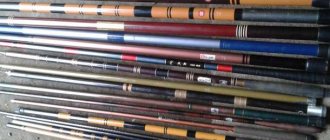Specifications
There are not many companies producing high-quality outboard motors for boats; Yamaha has been producing high-quality products in this area for more than half a century. The company does not give up its leading position, which indicates the high quality of its products.
Technical characteristics help combine power and reliability in Yamaha engines. Leading experts constantly modernize products, introduce innovations into existing ones and develop new models.
Products for boats for fishing and outdoor activities are divided by power:
- from 2 to 15 horsepower are classified as low-power;
- from 20 to 85 horsepower will already have an average;
- Outboard engines from 90 to 300 horsepower differ greatly.
Everyone must choose the most suitable one on their own; this indicator depends on what distances will need to be covered and how quickly it will need to be done. Fuel consumption will also be different; the more horses, the more they will eat.
The ideal option would be to consult with an experienced sales specialist. Having revealed his goals, each angler will receive an answer to the question of which motor is best suited.
What are the characteristic features of outboard boat motors?
Evgeniy Bronov
auto RU
Boat motors have advanced so much today that it is sometimes difficult to imagine that they used to be noisy and vibrating units. Currently, the modern motorcycle market presents the audience with boat engines for boats with very advanced functions and a good technological component. These motors save your fuel a lot and are extremely helpful in steering the entire boat:
- boat motors today represent a very wide range of high technologies. And even here, the designers of most global brands do not want to stop, offering constantly updated ranges of their products every year. Even inexpensive motors for boats, as a rule, have very good equipment and advanced motor functions.
- Countries such as America, Japan and China stand apart, producing the most technologically advanced equipment. All of these countries are targeting new technologies and completely different audiences. Today, various other global brands are trying to copy the fillings of engines from these countries;
- Four-stroke and two-stroke boat engines are especially developed, which today are produced by almost all world brands. They are examples of extremely technological filling and distinctive functions. For example, these are the safest, most reliable, practical and functional outboard motors. Today they are chosen by boaters from all over the world. In addition, these engines are very easy to use and extremely environmentally friendly. And what’s most interesting is that despite the presence of many options and functions, two-stroke and four-stroke outboard engines are very economical. Their gasoline savings reach 45 percent.
We recommend reading: How to make a boat motor yourself?
Decoding the markings on motors
You can otherwise find out in more detail about the chosen model, because there is not always a consultant nearby, and sometimes his qualifications are questionable.
At first glance, it is very easy to get confused in all these letters and numbers, but if you approach the issue more carefully and first study the meaning, then all the necessary information can be obtained even without a product passport.
Engine markings consist of several letters, this also includes numbers, so what do they mean?
The first digit of the marking of any model of outboard engines for Yamaha boats will tell the buyer about the type:
- E classifies the product as a member of the Enduro series, such motors were specially developed for difficult conditions;
- F will tell you that we have a four-stroke engine;
- K – work is carried out on kerosene;
- L is a distinctive feature of all products with a counter-direction propeller;
- Z means that our attention is offered to a two-stroke type of product with direct fuel injection;
- The letter D marks motors for a twin installation; the propeller will work in the opposite direction.
If there are no letters at all before the number, then the motor is a regular two-stroke model.
After the letter there is a number, it indicates the power of the product and shows how many horsepower it holds. This is followed by a letter indicating the generation of motors.
The type of starter and steering is determined by the second letter after the number:
- H stands for tiller control;
- E will tell you about the electric starter;
- with M they have manual start;
- W accommodates both manual start and electric starter;
- C has a tiller and remote control.
Models without letter designations have only remote control.
The mechanism for lifting out of the water is also designated in a special way, the following letter designation will tell you exactly about this:
- D stands for hydraulic drive;
- P will tell you about the presence of an electric drive;
- T has an electric drive with additional tilt angle adjustment.
If the marking does not contain a letter meaning, then lifting is carried out manually.
Next comes the designation of engine lubrication. O will tell you about multi-point oil injection, but if there is no letter, then the procedure is carried out with a pre-prepared mixture.
The last letter in the marking tells about the daywood (transom):
- S is used for standard or so-called “short legs”;
- L is for long;
- X – this is how extra-long is marked;
- U says it can't be longer.
Victoria Leshchenko
I've been working hard in the fishing tackle department for the past six years. I can help you assemble almost any gear.
Ask a Question
By comparing all the knowledge gained, you can easily understand on your own which engine is in front of us and what characteristic features are characteristic of it.
Equipment
Each motor is packaged in individual packaging, the packaging may vary depending on the model, but the main points will be:
- a propeller; no motor is produced without it;
- cold engine starting system;
- emergency starter cable;
- oil heating and pressure indicators;
- emergency switch;
- water and fuel separator;
- rev limiter.
Further, four-stroke and two-stroke engines may have additional devices, the presence of which is verified against the document inside.
Care
To avoid breakdowns at the most inopportune moment, it is worth regularly inspecting and replacing worn-out spare parts of the product.
Some anglers and outdoor enthusiasts change spark plugs and oil once a year, and change the cooling pump impeller every couple of years. This is all good, but the rules when leaving should be a little different.
According to experienced mechanics, prevention should be carried out based on other indicators. It is important how many hours the engine has worked, its wear begins precisely from this. It is advisable to take care of an outboard motor for a boat every 50 hours of working time, and not calculate the period in years.
The best two-stroke engines from Yamaha
There are a lot of two-stroke engines for Yamaha boats; according to buyers, the TOP 2 best models have been compiled that fully meet the price-quality criterion and will never let you down.
Yamaha 2DMHS
This model will be ideal for a small single-seater boat. Most often, a motor is purchased to cover short distances; you can get to the middle of an ordinary lake and return back without any problems.
The two horsepower contained in a small product does not require special care. The single-cylinder engine is controlled by a tiller; the speed is adjusted manually. There is no built-in lubrication system in the engine; its compact dimensions simply cannot accommodate it; gasoline is mixed with oil in a ratio of 50:1.
Victoria Leshchenko
I've been working hard in the fishing tackle department for the past six years. I can help you assemble almost any gear.
Ask a Question
The weight of 11 kg allows you to transport the motor over long distances without problems.
Yamaha 9.9 GMHS
Relatively light weight and quiet operation have brought this type of motor to a leading position. Despite the claims of some fishermen that the motor is outdated, it is still very popular among boaters to this day.
The two-cylinder outboard engine produces up to 9.9 horsepower. A distinctive feature is 5 modes of tilt change if the movement is carried out in shallow water.
Yamaha four-stroke outboard motors
As for four-stroke engines, Yamaha engines, varying in power, are divided into several categories:
- up to 8 hp
- 9-25 hp
- 40-60 hp
- 80-150 hp
- 150-250 hp
The first group, its name - F, includes the following engine models: 2.5, 4, 5, 6, 8. This series of engines is characterized by low power and they are usually used on small boats, yachts or cutters as auxiliary ones. I would like to emphasize that these Yamaha outboard motors are in great demand among fishermen due to their relative cheapness and good technical performance. These engines are characterized by high reliability, low weight and low fuel consumption.
The second group includes four F-models: 9.9, 15, 20, 25. These are medium-power Yamaha outboard engines and, in terms of their technical parameters, they surpass many competitors in their class. For their class they are extremely economical and compact. In general, these motors are used on watercraft with a length of up to 4 m.
The third group of Yamaha outboard motors consists of three models of F engines: 40, 50, 60. They are equipped with a two-speed trim and engine tilt control system. In addition, they have an easy start system (Prime Start), which allows you to start the engine with one turn of the key. This series is distinguished by high speed with relatively low fuel consumption, and of course it is reliable.
As for the fourth group F, there are very well-known models in their class: 200, 225 and 250. This series of Yamaha outboard motors is distinguished by great power, efficiency, reliability and even environmental friendliness, but at the same time they have a considerable weight of up to 280 kg . This detail must be taken into account when purchasing.
TOP 3 best four-stroke engines
The manufacturer also has plenty of four-stroke models; three are popular. We will now look at them in more detail.
Yamaha F4 BMHS
A new model, but already proven in the market. The single-cylinder engine has a displacement of 139 cc, which is the maximum possible with such power. The outboard motor is distinguished from other models by its low amount of exhaust emissions and a unique system that helps prevent oil leakage, no matter how the motor is transported.
Yamaha F15 CEHS
The four-stroke engine has two cylinders, 15 horsepower, manual and electric start. A distinctive feature is the efficiency of fuel consumption, the presence of a generator, and the ability to change the inclination when passing through shallow water. The reclining system upon impact is also important. The ease and silence during operation will also please the fisherman.
general information
Yamaha Motor Co., Ltd. has been producing outboard boat motors since 1960. The first-born of the company was the 123 cc “R-7”. In the same year, the plastic boat “SAT-21” appeared on the market. Beginning literally with the release of the first outboard motor, the management of Yamaha Motor Co., Ltd. began to pursue a very aggressive sales policy, actively capturing the markets of the USA, Canada, Europe and Asia. Australia did not escape this fate, as did other countries and even continents. Today, Yamaha Motor Co., Ltd. products will be sold both under its own logo and under other brands.
Yamaha boat motors
The active development of the market for motorcycles, jet skis, snowmobiles, ATVs and other power equipment forces many manufacturers to improve various production technologies and improve product quality. One of the first Yamaha Motor Co., Ltd. began to use a separate lubrication system on 2-stroke outboard motors, which was called “Autolube”. More complex technologies on 2-stroke engines began to be used in the 90s of the last century and made it possible to retain powerful models in the production program that meet the requirements of environmental standards in many countries and even exceed them. HPDI technology, which is equipped with high-power injection 2-stroke engines, implies the presence of a fuel injection system into the combustion chamber under high pressure, due to which the fuel-air mixture burns almost completely. This allows not only to reduce harmful emissions into the atmosphere, but also to increase the efficiency of the engines themselves, as well as reduce specific fuel consumption.
By 2000, Yamaha Motor Co., Ltd. produced 6 million outboard motors that were sold all over the world.
If today you ask owners of boats and boats in different parts of the world what kind of motor they would like to buy for their boat, then the first in the ranking will be Yamaha motors, so firmly is the image of Yamaha Motor Co., Ltd. firmly entrenched in their minds. implies high quality and good consumer opportunities.

